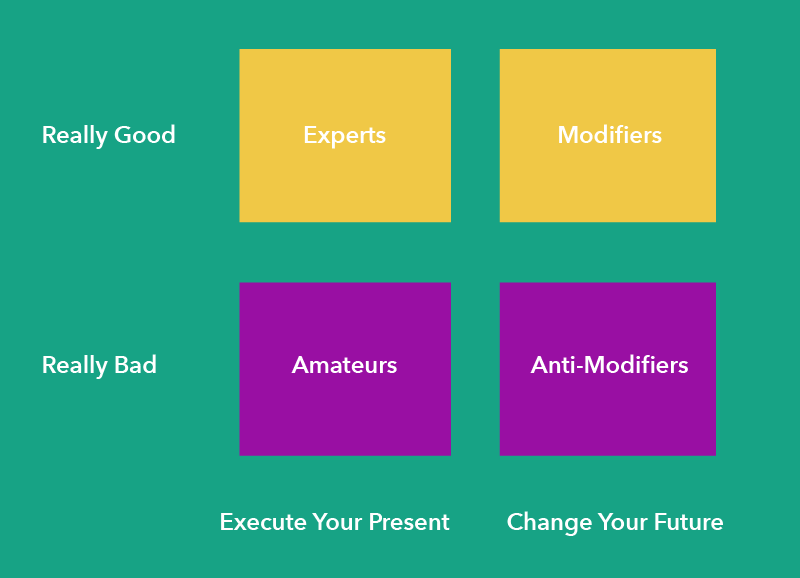
As a system, the brain is super complex. But there is linearity to how the brain works, and that makes things WAY simpler.
Here's what happens with sensory data in the brain, and what you can do about it...
Here's what happens with sensory data in the brain, and what you can do about it...
First, the majority of sensory data hits the Thalamus. In a nutshell, the thalamus will assess novelty.
Ever read 8 pages of a book and can't remember a single word? Ever driven down the highway for 20 minutes and didn't really pay any attention to your surroundings?
Ever read 8 pages of a book and can't remember a single word? Ever driven down the highway for 20 minutes and didn't really pay any attention to your surroundings?
When we see something interesting, the thalamus knows it.
So....is what you're saying or showing really interesting? Designed beautifully? Novel in a delightful way?
If not, you're putting their brains in highway mode.
That's the case for design. Not ROI....BRAINS.
So....is what you're saying or showing really interesting? Designed beautifully? Novel in a delightful way?
If not, you're putting their brains in highway mode.
That's the case for design. Not ROI....BRAINS.
Second, we'll quickly encounter the amygdala, assessing for threats.
But not only are tigers and snakes and spiders threats...jerks are too. Ideas that will change someone's day, threaten their social standing, or make things unpleasant for them. Those are legitimate threats.
But not only are tigers and snakes and spiders threats...jerks are too. Ideas that will change someone's day, threaten their social standing, or make things unpleasant for them. Those are legitimate threats.
Is what you're saying going to threaten their standing, intentions, plans, comfort, reputation, etc.?
If so, get ready for some roid rage. The amygdala triggers the release of adrenaline in the bloodstream. Cognitive ability declines by up to 30%. Sensitivity rises. Aggression.
If so, get ready for some roid rage. The amygdala triggers the release of adrenaline in the bloodstream. Cognitive ability declines by up to 30%. Sensitivity rises. Aggression.
Next, we're going to see the hippocampus come to life. It's going to bring up relevant memory to what the person is seeing and hearing now.
And it's going to play the game we played as kids and circle all the differences.
And it's going to play the game we played as kids and circle all the differences.
You know what differences cause in the brain when the hippocampus is playing that game? Stress.
The hippocampus likes familiarity, and strongly dislikes mismatches between what you're saying and what that brain already knows.
Start with familiar before sharing the unfamiliar.
The hippocampus likes familiarity, and strongly dislikes mismatches between what you're saying and what that brain already knows.
Start with familiar before sharing the unfamiliar.
Then, and only then, can your message truly be considered by someone.
1. It needs to be novel and worth paying attention to
2. It needs to be nonthreatening and careful
3. It needs to be a match to some existing paradigm
...then...but probably not...
1. It needs to be novel and worth paying attention to
2. It needs to be nonthreatening and careful
3. It needs to be a match to some existing paradigm
...then...but probably not...
You will have the opportunity for the drawbridge to be let down and allow you to speak to the prefrontal cortex.
Here, you will be able to talk to a logical, creative, thoughtful, introspective, profound part of the brain. A part that treats information much less emotionally.
Here, you will be able to talk to a logical, creative, thoughtful, introspective, profound part of the brain. A part that treats information much less emotionally.
But you don't get automatic access to a prefrontal cortex. That's up to them.
And you know the hardest part? You're going to have a hard time with peoples' prefrontal cortices because even they struggle to have a relationship with their own prefrontal cortex.
And you know the hardest part? You're going to have a hard time with peoples' prefrontal cortices because even they struggle to have a relationship with their own prefrontal cortex.
If you're in the business of sales, customer success, product management, architecture, marketing, you cannot count on access to logic, creativity, and profound thinking centers.
The only thing you can count on is the first three parts of the brain. These are used involuntarily.
The only thing you can count on is the first three parts of the brain. These are used involuntarily.
So focus on novelty, de-risking, and making the message familiar enough.
Then, watch for whether the prefrontal cortex does or doesn't enter the room. If it does, the person will be asking smart questions and digging in.
Then, watch for whether the prefrontal cortex does or doesn't enter the room. If it does, the person will be asking smart questions and digging in.
If they are asking weird questions in the weeds, judging, raising objections instead of questions, they are speaking from the hippocampus. The memory and judgment center. Don't give prefrontal answers to the hippocampus. It makes for a very angry hippo.
If you'd like to sign up to learn more about neuroscience and how it changes leadership, sales, marketing, planning, engineering, customer success, and more, shoot me a note and we can talk technique and tools to make your life easier and more effective.
@ someone you think this might help
• • •
Missing some Tweet in this thread? You can try to
force a refresh



